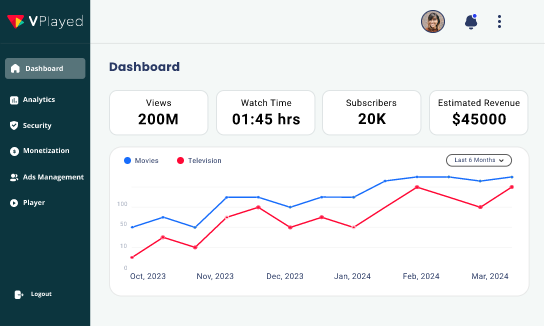Start and Grow Your OTT Streaming Platform With 1000+ Features & 10+ Revenue Models.
Request a Free DemoHow OTT Platforms Earn Money in 2025? [Best Ways + Business Model]
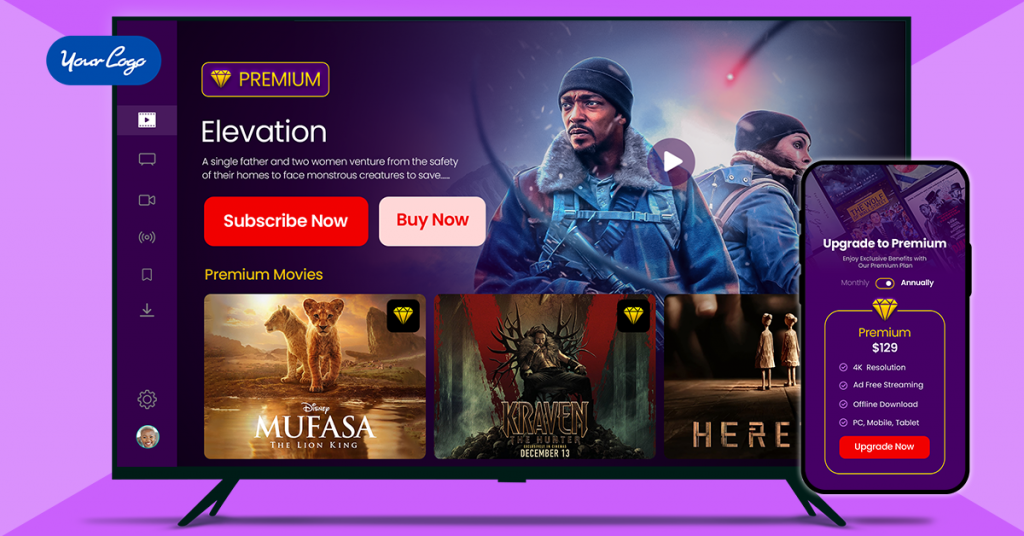
You are here for answers on how OTT platforms make money. We got curious as well and started inspecting each and every sector of OTT video platform money making ways and came up with this blog.
Use pay money to watch OTT video content and OTT platforms earn money. The idea of monetization is not as simple as that, there are multiple ways in which an OTT platform invests to generate revenue. And it’s a detailed process.
In the current OTT market, there are around 61+ OTT platforms across the world; The global OTT market is estimated to be around $434.5 billion by the end of 2027 with a CAGR of 16.5% and the revenue from OTT platforms is expected to reach $316.40 billion in 2024.
With that all that, there is not just one way but 10+ monetization models which is utilised by these OTT platforms to earn money from subscribers, read through the blog to get the answers,
- Fully Customizable
- Lifetime Ownership
- On-Premise/On-Cloud
- 100% White-label
- Zero Revenue Share
- Hire Developers
Table of Contents
What is an OTT Platform?
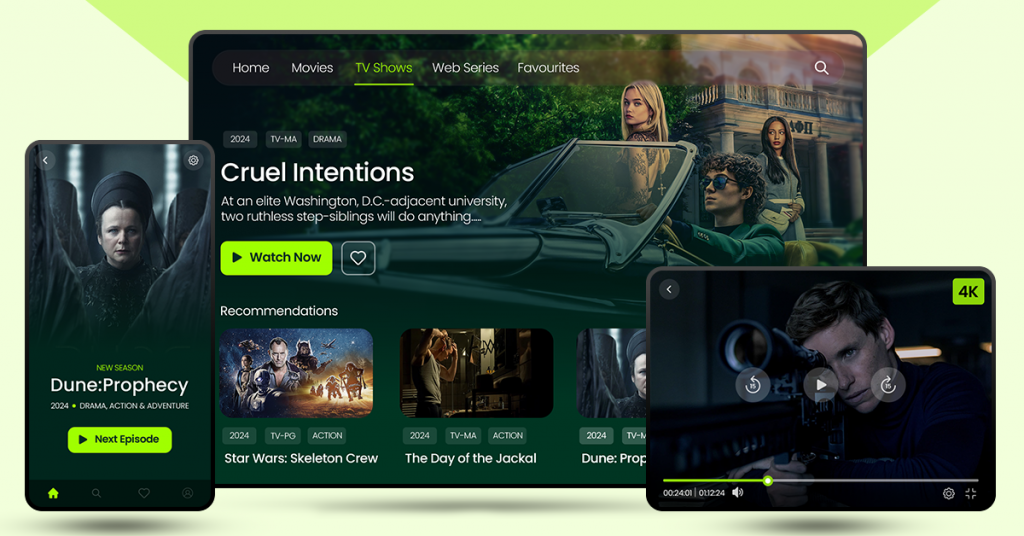
OTT full form are Over-the-Top platforms which deliver video and audio content directly to user devices through an application over the Internet.
Unlike traditional satellite and cable television providers, these OTT platforms have no time slots or limited content categories, which makes them earn money 24/7.
Some of the prime examples of OTT platforms are Netflix, Hulu, and Amazon Prime Video.
OTT Business model works by providing access to video content to paid subscribers in multiple ways, right from web to mobile TV apps. OTT platforms predominantly earn money through subscriptions, pay per view, advertisements and content licensing.
How OTT Platforms Earn Money in 2025?
On a majority OTT platforms make money through subscription fees, advertisements, pay-per-view, hybrid models, rentals, sponsorships and content licensing.
Most of the OTT platforms implement these other strategies mentioned below, to fill their accounts and let’s get to know them in detail,
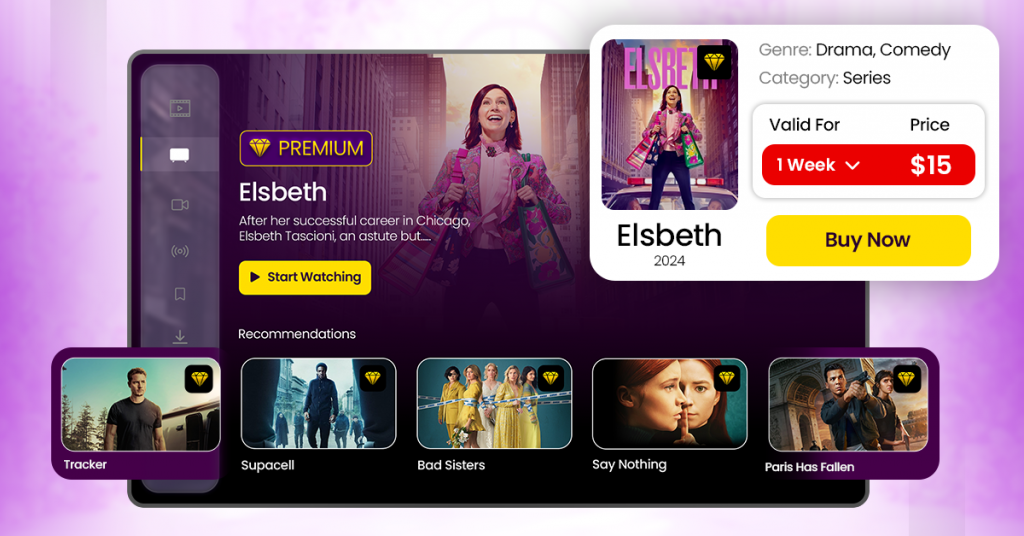
1. Video Advertising Networks
Video Advertising Networks (VAN) are nothing but ads displayed on your OTT website by third parties. OTT platforms usually earn money based on the buyers and the video ad impressions transacted.
Data states that Ad spending in the Video Advertising market is estimated to reach US$191.3bn in 2024. VAN has more potential in helping OTT platform owners generate money, if the right marketing strategies are implemented amongst advertisers.
2. Direct Advertising
Without external intervention, OTT platforms can advertise and make money from businesses through direct advertising,
For instance, lets say, coca-cola launches a new product and wants to launch an ad in your OTT platform, as a platform owner you can display the ad and get money from Coca-cola for the impressions made from your platform.
3. Sponsorship Deals
Sponsorships are simple and effective methods to earn money, where businesses market products in your OTT platform to their target audience through banner ads, displays, or launch screens for brand exposure.
4. Monetizing Your Video Content
Monetizing your video content is playing in your own arena with your viewers and platform users, this way is very effective as it brings recurring income through subscriptions and other monetization models.
Some of the most prominent video monetization platform models involve SVOD, AVOD, TVOD, Freemium, Premium, Hybrid, Coupons & promotion, Catchup TV.

SVOD
Subscription video on demand model (SVOD) is when you charge your viewers as a OTT platform for watching video content placed in your OTT platform. The subscription charges are collected on a monthly, quarterly or yearly basis.
Platforms like Netflix have a combination of subscription video platform-based plans for watching movies and series. Netflix made $33.7 billion revenue in 2023 with 238.3 subscribers.
AVOD
Advertisement based video on demand (AVOD) is money earned from advertisements by third party brands to display ads about their products in your OTT platform.
Sometimes In reverse OTT platforms earn money by eliminating these ads and charge a fee from your users. A prime example is Youtube premium subscription plan.
TVOD
Transactional Video on Demand (TVOD) is when users pay for viewing a particular content. This involves a one-time purchase and rental basis.
WWE premier shows are pay-per-view during the traditional TV days and now most of the live entertainment and boxing matches follow the pay-per-view models in sports streaming platforms.
Hybrid
Sometimes OTT platforms mix two or more subscription models to get the best of revenue for premium content. For example, Specific old movies in Amazon prime are available for rentals and subscription basis. They double up the revenue for one single content.
Freemium
Freemium attracts advertisers to publish ads in your OTT platform, where you can charge a sum from them, most of the free youtube movies are freemiums. In freemium you can pull off branding activities and other marketing activities.
Looking To Build Your Own OTT Platform
Start and Grow Your Video Streaming Service With 1000+ Features & 10+ Revenue Models.
 Highly Customizable
Highly Customizable Life Time Ownership
Life Time Ownership Own 100% of Your Revenue
Own 100% of Your Revenue
 Full-Branding Freedom
Full-Branding Freedom
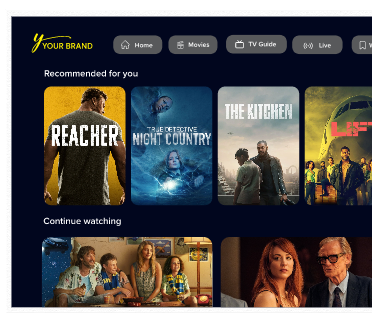
Premium
The name speaks for itself, you might have come across this tagline “ Enjoy premium content access with ad-free viewing” Premium stands for special or early viewing of video content before it is broadcast to subscribed viewers.
Coupons & Promotion
Businesses approach OTT platforms with discount coupons and promotional activities of their products via OTT platform, this builds another revenue stream and adds a small margin of profit for them.
Catchup TV
On-demand OTT platforms serve viewers with pre-aired tv shows and movies with Catchup TV subscription.
These cover a large volume of retro classics and movies released in the past.
How To Use Different Advertising Formats To Earn Money On OTT?
Advertisements have their way to help OTT platforms earn money, displaying ads while viewing is not enough, you can multifold this if you know these three different advertising formats and where to place ads.
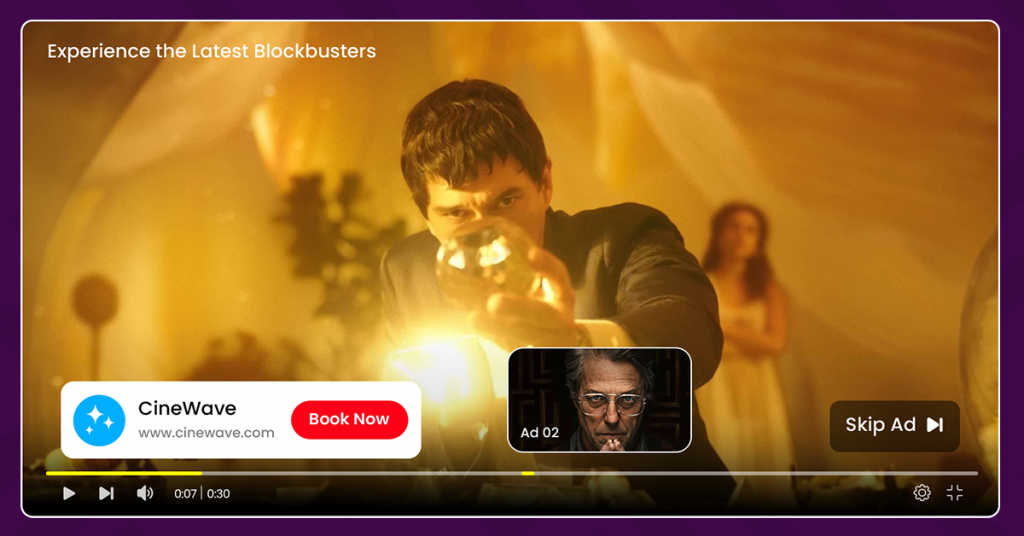
Pre-roll ads
Pre-roll ads are advertisements placed in the beginning of the video, this grab most of the attention from the viewers and build more engagement and redirection to sales. Getting businesses and brands to place ads on pre-roll OTT platforms charge a sum for the prior placement of them.
Mid-roll ads
These ads are the patient-tester, mid-roll ads are placed in the middle of the video watch, these are not opted by most brands but still they retain a space and are remembered well by viewers and drives sales post viewing.
Post-roll ads
At the end of the OTT streaming of movies post-roll ads are placed, creating a lasting impression and driving sales for the product or brand advertised.
These final placements of ads gain more attention and engagement from users, building more revenue for OTT platform owners.
Apart from this, on a technical front, OTT platforms place ads from server and they are
SSAI- SSAI is inserting ads into a single, high-quality, long-form digital video stream
CSAI- Client-side ad insertion (CSAI) is when a video player requests an ad from an ad server.
Third Party Ad Integration- Third-Party Applications is allowing third parties to create integrations with Google Ad Manager for their clients.
Which Monetization Model Is the Best Way to Make Money?
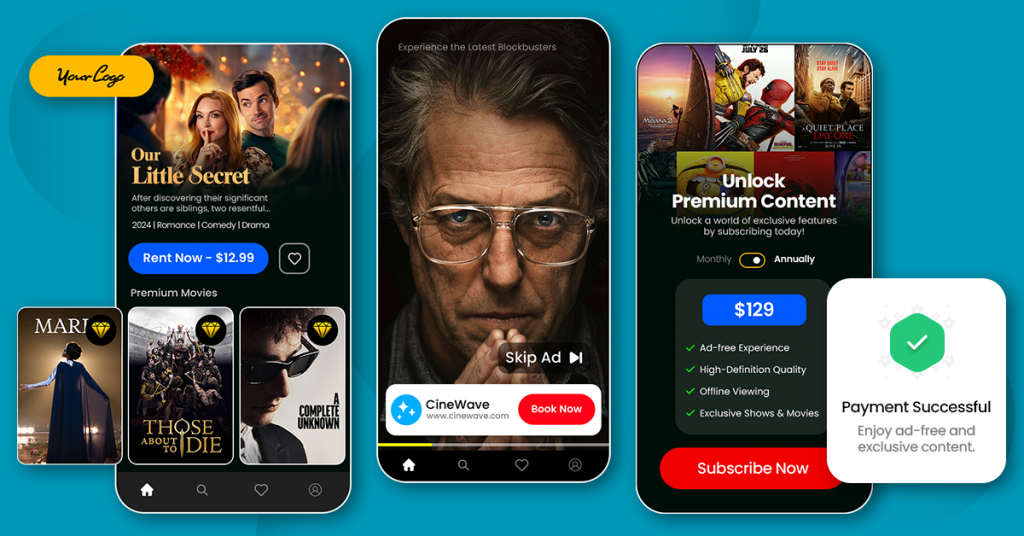
The best way to make money in OTT is based on the content you stream and the OTT platform goals you have alongside the methods and protocols followed for monetization.
The one model which is promising in all arenas is Subscription-based Video on Demand (SVOD) with recurring income based on monthly and yearly subscriptions.
Advertisement Based Video on Demand (AVOD) model, also offers a big sum of money from advertisers.
Transactional Video on Demand (TVOD) also helps create a huge amount of money with premium content. And they pay per view as it increases your money making chances.
The safest way to play in the OTT market and not to lose money or subscribers is to study the competitors, prioritizing quality OTT content purchase and combining the subscription, ads and transactional models with a hybrid plan.
If you’re still in confusion, the best way to schedule a demo and speak with experts who will assist you in a progressive way out.
Conclusion:
The growth and increase of the viewer base in the OTT market is prominent but to drive revenue growth in the market and OTT services promising OTT platforms has to be built with rich features delivering power-packed entertainment options.
Expansion of the revenue opportunities are great if you play with the right monetization models and OTT content.
- Request Demo Book a Live, Personalized Demo
- Contact Sales Reach Out to Our OTT Experts
